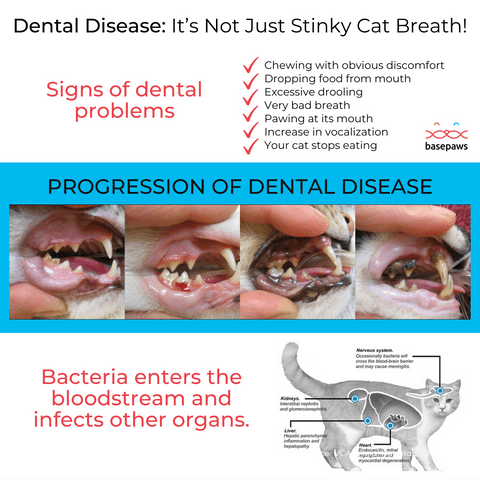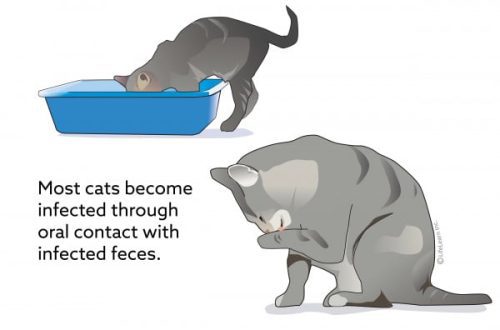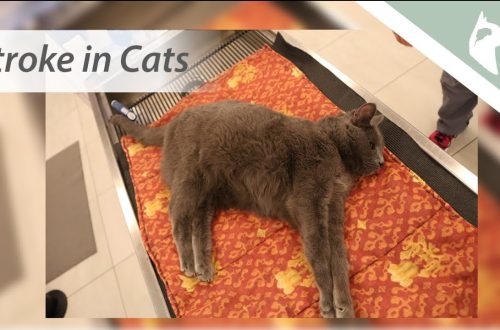
Causes and signs of dental disease in cats
Good, healthy teeth are very important for both your health and the health of your cat.
Contents
Graphic Content
- Normal cat teeth
What is dental disease?
It can sometimes be difficult to keep a cat’s teeth clean, so dental health problems are very common.
Studies show that 70% of cats around two years of age show signs of dental disease. Problems usually start with a buildup of sticky plaque that hardens over time and turns into tartar. If not removed, it can lead to gingivitis, a painful condition of inflamed gums, and eventually periodontal disease. Cats lose teeth and are at risk of developing infections that can affect other parts of the body.
What causes dental disease?
Plaque, the colorless film on a cat’s teeth, is the cause of bad breath and gum disease. Because your cat doesn’t brush her teeth in the morning like you do, this plaque can lead to tartar buildup. The result is swelling, redness and inflammation of the gums or, in other words, gingivitis. If not checked regularly, your pet may develop periodontal disease, which destroys the gums and tissues that support teeth.
Certain factors contribute to the occurrence of dental problems. It:
Age Dental disease is more common in older cats.
Food: Eating sticky cat food can lead to more rapid plaque formation.
Dental disease is preventable and treatable in most cats. Keeping your pet’s teeth and gums clean and healthy is not difficult at all. The first step is to ask your veterinarian about professional preventative dental cleanings. Then find out how often you should brush your cat’s teeth (yes, you can do this at home).
Does my cat have dental health problems?
If your cat has a toothache, the first thing you will notice is bad breath. If you notice any of the following signs, your pet may be having dental problems. You need to contact your veterinarian for a complete examination.
- Bad breath.
- Stomatitis – inflammation of the oral mucosa
- Difficulties with eating.
- Loose or loose teeth.
- The cat touches with its paw or rubs its mouth.
- Bleeding gums.
- Yellow or brown tartar on the teeth.
- Salivation.
IMPORTANT: Even if your cat does not show any signs of dental problems, it is recommended that you have regular oral examinations with your veterinarian to learn how to properly brush your cat’s teeth to prevent problems in the future.
Importance of nutrition
The health of a cat and her condition in general largely depend on the food she eats. Ordinary dry cat food is good for a cat’s teeth, as the gentle abrasive action cleans the cat’s teeth when chewing on the kibble. If she has more severe symptoms of gingivitis, you can give her specially formulated cat food that cleans her teeth much better than regular dry food.
A balanced diet is an essential part of an active, healthy lifestyle. If your pet has dental problems, choosing the right food is especially important. For an accurate diagnosis and treatment options, always consult your veterinarian and ask them to recommend the best food for your cat’s dental health.
Ask your veterinarian about your cat’s dental health and disease:
- What foods should I not give my cat due to her condition?
- Ask how human food can affect a cat’s health.
- Would you recommend Hill’s Prescription Diet for my cat’s dental health?
- Ask about your cat’s dietary habits./li>
- How much and how often should you feed your cat the recommended food?
- How quickly will the first signs of improvement in my cat’s condition appear?
- Can you give me written directions or a brochure about the health and dental conditions my cat has been diagnosed with?
- What is the best way to contact you or your clinic if I have questions (email/phone)?
- Ask if you will need to come in for a follow-up appointment.
- Ask if you will receive a notification or email reminder of this.





